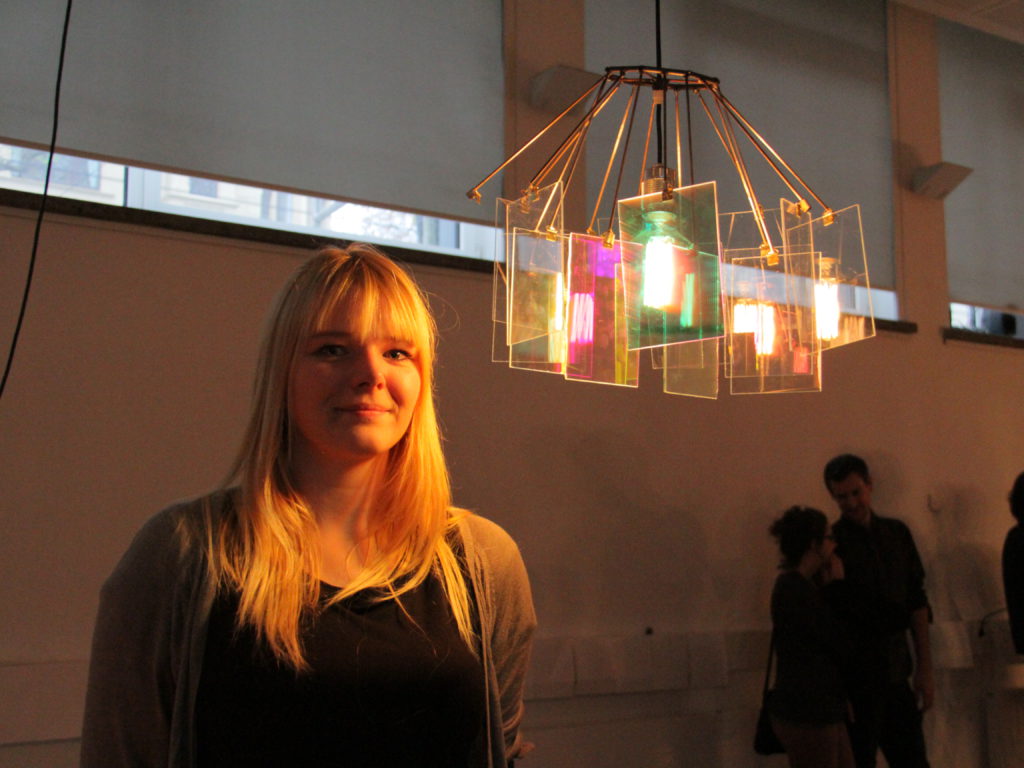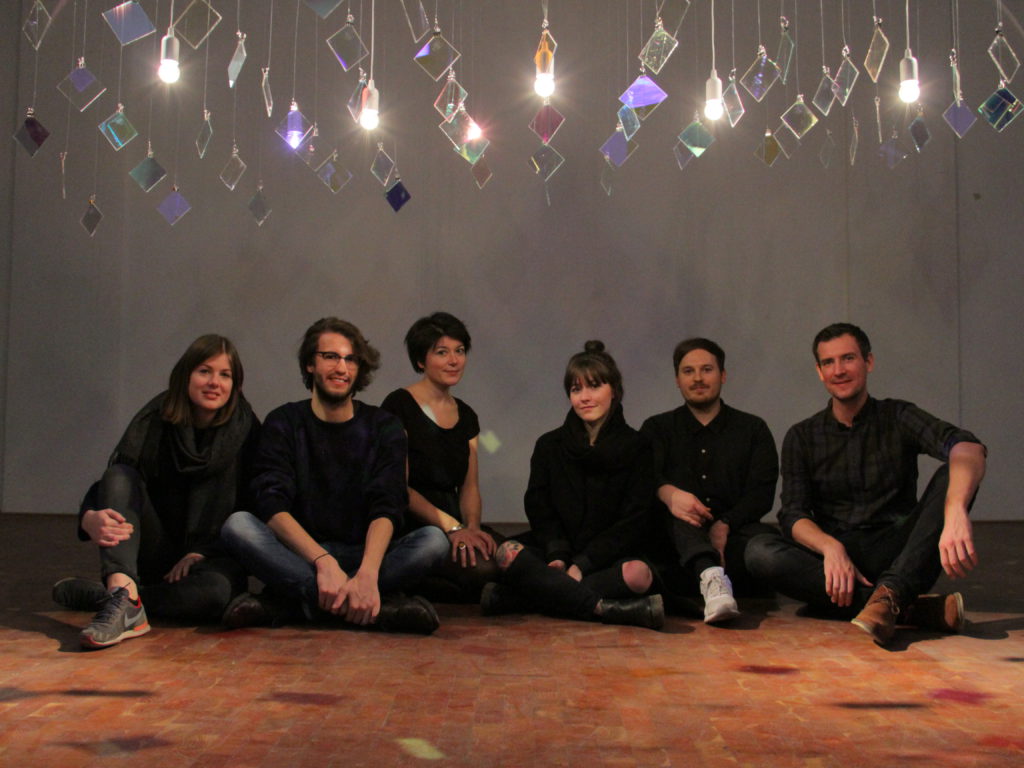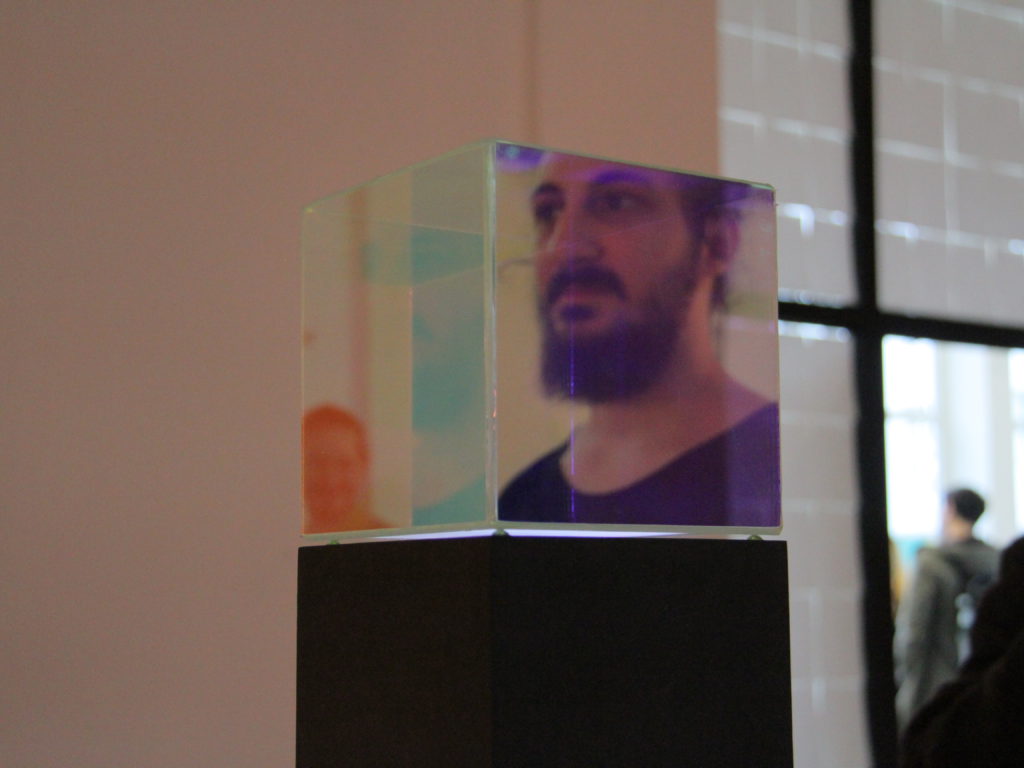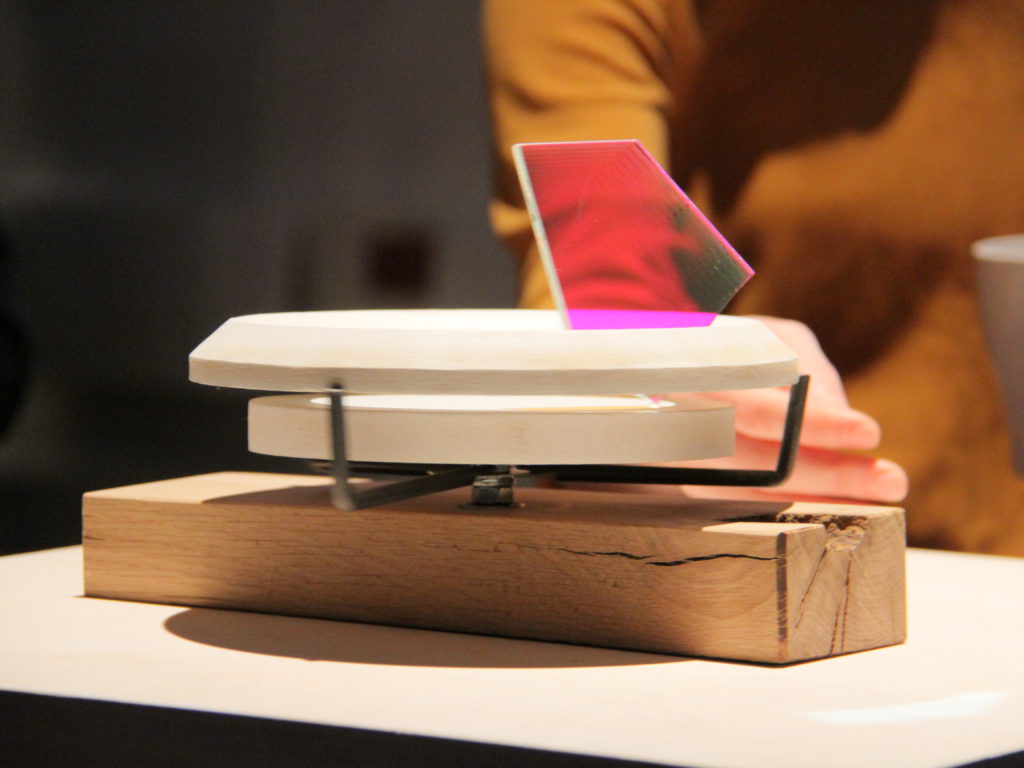The interference of colour, originating from the overlay of different wavelengths of light, is a visual phenomenon that can be found all throughout nature. Even though it can usually only be found in nature, it is possible to mimic this effect with specially coated, iridescent glass. In this one-week-project at KISD in November 2015, “Glass-Objects and the Interference of Colours”, dichroic coated glass was used to create objects displaying the two most striking qualities of the material: The transmission and reflection of light in various colour schemes.
Playing with light and using its qualities through transmissive and reflective, specially coated glass was the starting point for the project lead by Berlin-based designer Sebastian Scherer. The dichroic coating is one of the trademarks in his furniture designs and bestshown in his award-winning lamp “Iris”. The project group was given an introduction to the topic and the qualities of the glass. Mr Scherer explained the production process and shared his experience in working with the glass as a material. The task then was to create an object, a piece of furniture, a lamp or an art piece that utilises the qualities of the glass. Each one of us was given three to four square glass plates, 15cm x 15cm we could use within our objects. From there on, we had three and a half days until the presentation to not only come up with a concept, but to actually build a model as well. Throughout the whole process we were guided by Sebastian Scherer and assembled various meetings, so tha t in the end, there were four different models to be exhibited:
KEHA – A Table Clock
, By Lotta Hyvärinen
What I found fascinating about the given material was not just the two contrasting colours the glass transmitted and reflected, but also and most importantly the steady shift between them, depending of the angle of the incoming light and the position of the person looking at it. Given the design brief of making a product, a piece of furniture, I quickly narrowed down to thinking of different objects in our homes that have the element of movement to them to make the most out of the phenomenon. The pointers of a clock are on a slow, yet constant move, visualizing the change in time through different positions in relation to one another and the clock face. I figured replacing the pointer with a piece of iridescent glass should add an extra indicator of time to the clock: Change of colour throughout the day.
Since the movement and the play of colour already result to a lot going on on the clock, I wanted the rest of it to be minimalistic to calm things down. The upmost ring of the final product is thought to be made of plaster, the flat plate below it of white varnished birch. Since they are both light-colored, they repeat the colors the glass pointer sheds on it nicely. The rectangular base of the clock is made of a piece of dark wood and it marks the vertical diameter of the clock face: It’s noon or midnight, when the pointer aligns with the knot on the base.
Telling the time by looking at Kehä should feel like reading the position of the Sun. It isn‘t about minutes and seconds and tight schedules but about sensing the steady and always ongoing change in our environment and us as a part of it. Kehä is not supposed to scream out loud its purpose as a measurer of time – it‘s just as well simply a pretty and an interesting thing to observe.
Level Up light
, By Alice Horstmeier
To cope with this particular material , I have decided to work with various levels of the glass. Also I wanted to put a light source in the center which leads my final outcome to become a lamp. The center of Level Uplight builds a Edison Vintage lightbulb with its specific glow wire. Through the various looks and levels of reflections in the iridescent material in combination with the arrangement the light source shines even brighter and in different colours – not only depending on the angle the viewer is looking through but also how the light situation exteriorly. To highlight the shimmering glass the lampshade itself consists of heavy and rustic welded metal.
(As the lamp is a prototype, some parts are made out of simple acrylic glass.)
Quad.ir
, By Kadir Inan
As a designer that has been focusing on function and simplicity Quad.ir was the result of a very simple idea.
It was decided from the first moment I had the iridescent glas in my hands that the characteristics were the main focus of the object I was going to build.
The colorful spectrum of the glas just asked to be presented in a way that it could be viewed from any angle resulting in different shade of color. Thus the cube came to life.
Adding a point of illumination from the inside turns the simple cubus of glas into an illuminated object, a very dim light source.
For the best possible result it is very important to have a good balance of ambient light and directed light.
The base of the lamp finishes with a rather rough and cold structure opposed to the warm light and reflections coming from the cubus.
VÅG
, By Hannes Hummel, Flora Karger, Hannes Hummel, Flora Karger, Sebastian Oft, Dustin Schulz, Naja Schulz, Katja Trinkwalder
During the first experiments with the glass we were all fascinated by the effects the glass could create under movement, which eventually brought as together as a group. By being six people in one group, it was possible to dare a bigger installation, as in total there was a larger amount of glass to be utilised. Eventually, the play of colours and iridescence, enhanced by movement, was the basis for the idea of »VÅG«.
»VÅG« , as a kinetic light installation, uses the interaction of glass, light and movement to stage the effect of transmission and reflection in all its facets. The movement consists of two layers: The rotation of each glass piece – of which we used 67 in total – around its on axis as well as the 40 degree axis described by each and every row in a temporal delay, thus creating a wave-like movement within the whole installation. Furthermore there are built-in sources of light, enabling an augmentation of the effect of interference and its projection onto the surrounding surfaces. Furthermore, as the intention was to not only create an installation, but an atmosphere, the music enhancing the experience was developed as well.
»VÅG« captures the attention of the viewers and encourages them to take different perspectives, to eventually see ever new facets of light, colour and movement, as well as to rest, take a minute and enjoy the tranquility.




